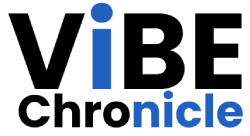In the hyper-competitive world of mobile technology, the race to market is everything. A brilliant app idea, no matter how innovative, can fail if a competitor gets there first. This is where the concept of rapid prototyping comes in, serving as a critical strategic advantage. Rapid prototyping is the process of quickly creating a preliminary working model of an application to test ideas, gather feedback, and validate assumptions before investing massive resources into full-scale development. By drastically shortening the feedback loop between ideation and a tangible product, these frameworks empower businesses to iterate faster, make informed decisions, and ultimately, get to market in a fraction of the time. This is a game-changer for businesses of all sizes, from tech startups to established enterprises, particularly within the fast-paced ecosystem of Mobile App Development USA.
For companies looking to launch a product, choosing the right set of tools is paramount. The right frameworks not only accelerate the design and development process but also foster seamless collaboration among designers, developers, product managers, and stakeholders. Here are nine rapid prototyping frameworks that have revolutionized the way mobile applications are built, each offering a unique set of benefits for slashing time-to-market.
1. Figma: The Collaborative Design Powerhouse
Figma has ascended to the top of the design world, becoming the de facto standard for UI/UX design and prototyping. Its primary advantage is that it is entirely browser-based, which eliminates the need for expensive software licenses and ensures that everyone on a team, regardless of their operating system, can work together in real-time.
- Why it’s great for rapid prototyping: Figma allows designers to create high-fidelity, interactive prototypes directly from their static design files. By simply connecting frames with gestures and animations, they can create a clickable model that feels like a real app. The real magic, however, lies in its collaborative nature. Multiple team members can work on the same file simultaneously, see each other’s cursors, and leave comments directly on the designs. This dramatically reduces the time spent on design handoffs and feedback cycles.
- Key features: Real-time collaboration, a powerful vector editor, an extensive plugin ecosystem, and a feature called “Auto Layout” that helps designers build responsive UIs with ease.
- How it slashes time-to-market: By unifying the entire design process in one tool, Figma eliminates the friction of file management and version control. Stakeholders can review prototypes instantly, and developers can access design specs and assets with a single link, speeding up the handoff and implementation stages.
2. Flutter: Google’s Cross-Platform UI Toolkit
Flutter, Google’s open-source UI software development kit, is a game-changer for developers who want to build natively compiled applications for mobile, web, and desktop from a single codebase. It’s particularly renowned for its speed and beautiful, customizable user interfaces.
- Why it’s great for rapid prototyping: Flutter’s “hot reload” feature is its secret weapon. This functionality allows developers to instantly see the results of their code changes without losing the application’s state. This means they can experiment with UI elements, fix bugs, and add new features in real-time, making the prototyping process incredibly fast and fluid.
- Key features: A rich set of pre-built “widgets” that adhere to both iOS (Cupertino) and Android (Material Design) standards, a single codebase for multiple platforms, and excellent performance that feels truly native.
- How it slashes time-to-market: With one codebase, a development team can target both iOS and Android simultaneously. This effectively cuts development time in half and reduces the complexity of maintaining separate codebases, making it a powerful choice for any Mobile App Development USA company seeking efficiency.
3. React Native: Building with JavaScript
Backed by Meta (formerly Facebook), React Native enables developers to build native mobile apps using JavaScript and the same declarative programming model as React.js. For web development teams, this framework offers a familiar and comfortable environment for venturing into mobile app development.
- Why it’s great for rapid prototyping: Like Flutter, React Native features a “Fast Refresh” and “Hot Reloading” capability, which allows developers to see changes almost instantly. Its extensive ecosystem of third-party libraries and components means that developers can quickly add complex functionalities without building them from scratch.
- Key features: A vast community and ecosystem, the ability to reuse a significant portion of code between platforms, and a reliance on JavaScript, a language widely known by developers.
- How it slashes time-to-market: React Native allows companies to leverage their existing web development talent to build mobile apps. This saves time and money on hiring and training, and the single codebase approach significantly accelerates the development timeline, getting a product into the hands of users much sooner.
4. Adobe XD: The Integrated Creative Suite Experience
Adobe XD is a vector-based tool for designing and prototyping user interfaces for web and mobile applications. Its deep integration with other Adobe Creative Cloud products like Photoshop and Illustrator makes it a natural choice for designers already embedded in the Adobe ecosystem.
- Why it’s great for rapid prototyping: XD allows designers to quickly switch between design and prototype modes. They can create interactive prototypes by linking artboards, adding transitions, and simulating gestures. The “Repeat Grid” feature is particularly useful for rapidly creating lists and galleries, speeding up the creation of repetitive UI elements.
- Key features: Seamless integration with Adobe’s suite of tools, an intuitive and clean interface, and a robust set of features for creating responsive designs.
- How it slashes time-to-market: By offering a smooth workflow from initial wireframes to high-fidelity prototypes and then to developer handoff, Adobe XD streamlines the entire design phase. The ability to easily import and export assets from other Adobe products means designers can work faster and more efficiently.
5. Ionic: Web-Based Hybrid App Development
Ionic is an open-source framework that uses web technologies (HTML, CSS, and JavaScript) to build cross-platform mobile apps. It’s perfect for teams with a strong background in web development who want to leverage their existing skills to create mobile applications that have a native look and feel.
- Why it’s great for rapid prototyping: Ionic comes with a rich library of pre-built UI components that mimic the native look and feel of iOS and Android. Its command-line interface (CLI) and development tools enable rapid scaffolding of new projects and components. Developers can build and test their applications directly in the browser, which is much faster than compiling and deploying to a device.
- Key features: A vast collection of UI components, a strong focus on performance and usability, and a single codebase that works across web, iOS, and Android.
- How it slashes time-to-market: For teams that are already proficient in web development, Ionic offers a minimal learning curve. This allows them to start building and iterating on prototypes almost immediately. The ability to deploy a single codebase to multiple platforms is a major time and resource saver.
6. Bubble: No-Code, High-Impact Development
Bubble is a no-code development platform that allows individuals and businesses to build powerful web applications without writing a single line of code. While traditionally focused on web, its capabilities extend to creating mobile-first, responsive applications that can function as prototypes and even full-fledged MVPs.
- Why it’s great for rapid prototyping: The drag-and-drop interface of Bubble allows non-technical founders, product managers, and designers to build fully functional prototypes. They can define workflows, manage databases, and connect to APIs using a visual programming style. This completely bypasses the need for a developer in the early stages.
- Key features: Visual programming, a built-in database, a robust set of integrations, and powerful workflow automation.
- How it slashes time-to-market: Bubble is the ultimate tool for speed. An idea can go from a concept to a working prototype in a matter of hours or days, not weeks or months. This empowers teams to quickly test market viability and gather early user feedback with minimal investment, a crucial first step for many businesses in the competitive Mobile App Development USA landscape.
7. Swift UI: The Apple-Native Advantage
Swift UI is Apple’s declarative UI framework for building apps across all of their platforms: iOS, macOS, watchOS, and tvOS. While it is native and not cross-platform in the same way as Flutter or React Native, it is a formidable tool for rapid prototyping within the Apple ecosystem.
- Why it’s great for rapid prototyping: Swift UI’s live preview feature is its most powerful asset. As a developer writes code, a real-time preview of the UI appears in Xcode, the IDE. This immediate visual feedback makes it incredibly fast to design and iterate on user interfaces. The declarative syntax is also highly intuitive, making it easier to write clean, concise code.
- Key features: Live previews, a declarative syntax, seamless integration with the Apple ecosystem, and automatic support for features like Dark Mode and accessibility.
- How it slashes time-to-market: For companies targeting only Apple users, Swift UI provides a unified and incredibly fast development experience. The ability to build for all Apple devices from a single Swift UI codebase streamlines the process and ensures a consistent, high-quality user experience across the board.
8. ProtoPie: Precision in Prototyping
ProtoPie is a high-fidelity prototyping tool that focuses on creating prototypes with highly realistic interactions, animations, and conditional logic. It goes beyond simple screen linking to allow designers to create complex, dynamic prototypes that truly mimic the final product.
- Why it’s great for rapid prototyping: ProtoPie’s focus on interaction makes it perfect for testing complex user flows and micro-interactions. It allows designers to simulate device sensors, control hardware, and connect to other devices. This makes it possible to create highly realistic prototypes for user testing and stakeholder presentations.
- Key features: Multi-touch gestures, a range of triggers and responses, the ability to control hardware, and a cloud-based sharing platform for easy collaboration.
- How it slashes time-to-market: By creating highly realistic prototypes, ProtoPie helps validate design decisions early in the process. It allows teams to catch usability issues and interaction flaws before they are coded, saving significant time and effort in the development phase.
9. Vision Pro: Prototyping with AR/VR
Vision Pro is an innovative AR/VR prototyping tool that allows designers to create augmented reality and virtual reality prototypes without writing code. This tool is for a niche but rapidly growing segment of the market where traditional 2D prototypes fall short.
- Why it’s great for rapid prototyping: For applications that rely on AR/VR, Vision Pro enables designers to quickly build immersive experiences and test them in a real-world context. The ability to visualize and interact with 3D elements and spatial interfaces in real-time accelerates the prototyping process for these complex applications.
- Key features: No-code AR/VR prototyping, real-time collaboration, and the ability to test prototypes on a variety of AR/VR devices.
- How it slashes time-to-market: Vision Pro helps teams working on AR/VR projects to move from concept to a tangible, testable prototype at an unprecedented speed. This reduces the risk and cost associated with building these highly complex applications, making it an essential tool for the future of Mobile App Development USA.
The Collaborative Synergy: How Frameworks Slash Time-to-Market
The true power of these frameworks is not in their individual capabilities, but in how they work together to create a synergistic, efficient workflow. Rapid prototyping is not just about a single tool; it’s about a philosophy that prioritizes speed, collaboration, and continuous iteration.
These frameworks enable:
- Faster Validation: Prototypes allow businesses to test core concepts with real users before any significant development work begins. This feedback loop, whether it’s from a clickable Figma prototype or a functional MVP built with Flutter, ensures the final product is what the market actually needs.
- Clearer Communication: A tangible prototype serves as a single source of truth for the entire team. It bridges the gap between designers’ visions and developers’ implementation, eliminating ambiguity and reducing the need for lengthy documentation.
- Smarter Resource Allocation: By validating a concept with a prototype, a business can make a clear decision on whether to proceed with full-scale development. This prevents the costly mistake of investing months of effort and a large budget into an idea that ultimately fails in the market.
Conclusion
The mobile app market is a high-stakes arena where speed and innovation are paramount. Rapid prototyping frameworks have emerged as the most critical tools for navigating this landscape successfully. By embracing platforms like Figma, Flutter, and the rest of this list, businesses can dramatically shorten their development cycles, reduce risk, and get to market faster than ever before.
For any organization looking to make its mark, especially within the competitive and dynamic market of Mobile App Development USA, leveraging these frameworks is no longer an option—it is a necessity. The right combination of these tools, a smart strategy, and a skilled team is the formula for transforming an idea into a successful, revenue-generating product in record time.












